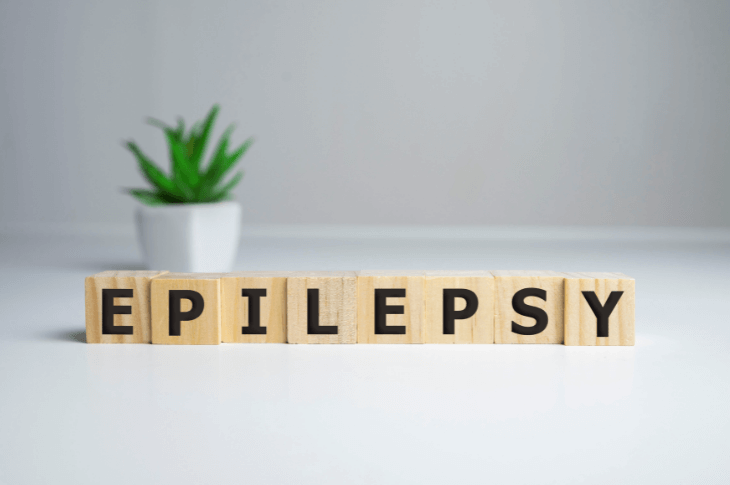
Epilepsy is a condition that causes frequent seizures. It can interfere with daily life, especially if the seizures are not controlled. Understanding this condition can help people prepare to assist those with epilepsy when they need it, as support is crucial for epilepsy sufferers.
What is epilepsy?
Epilepsy causes the brain to scramble electrical signals and can initiate a rush of electrical activity that impacts the way the brain functions on a temporary basis. This event is known as a seizure, which can produce a range of symptoms. While a person can be diagnosed with epilepsy at any point in their life, the NHS states that the most common age groups for receiving an epilepsy diagnosis are during childhood and over the age of 60. Most cases of epilepsy last for the patient’s lifetime, but it can gradually improve over time with proper management.
Epilepsy causes, symptoms, and treatments
There are various causes, symptoms, and treatments associated with epilepsy, as the specifics of the condition can differ between patients.
Causes
The exact cause of a person’s epilepsy is often unknown. Here are some factors that can contribute to the development of this condition:
- Genetics
- The NHS states that approximately 1 in 3 people with epilepsy have a family member with the same condition.
- Damage to the brain from various incidents, such as:
- A tumour
- Drug and/or alcohol abuse
- An infection in the brain
- A stroke
- Insufficient oxygen supply to the brain at birth
- A serious injury to the head
Genetics is one of the most common factors in diagnosing epilepsy, while damage to the brain is a less frequent cause. In many cases, the root cause of the condition remains ambiguous.
Symptoms
Epileptic seizures can produce various different symptoms depending on where they occur in the brain. These may include:
- A loss of awareness
- This often causes a person to stare blankly and aimlessly.
- A fit
- This involves involuntary and uncontrollable jerking, trembling, or shaking.
- Stiffness
- Collapsing or passing out
- Unusual feelings throughout the body
- These can include tingling in the limbs, distorted smells and tastes, and what some people describe as a ‘rising’ sensation in the abdomen.
In some cases, a person who passes out and suffers an epileptic seizure may wake up with no recollection of it happening. Due to this, they may feel confused and disorientated.
Treatments
There are multiple treatment options available for people with epilepsy, all of which aim to reduce or entirely prevent seizures. These can include:
- Anti-epileptic medicines
- This is the most common treatment option for this condition.
- Dietary changes
- Many epilepsy sufferers follow a keto diet.
- The insertion of a small electronic device into the body to help manage seizures
- A surgical procedure that involves removing the part of the brain that's causing the seizure activity to occur
- Only a small part of the brain is removed during this type of procedure.
Treatments for epilepsy often continue throughout the patient’s life, but they can be reduced or stopped altogether in some cases if the condition significantly improves. For example, some people with epilepsy stop having seizures after a long period of treatment and management, at which point they may choose to reduce or halt treatment entirely.
Misconceptions and stigma around epilepsy
Many people believe that seizures only involve jerking and shaking, otherwise known as a tonic-clonic seizure, and fail to recognise the other symptoms that could signify an epileptic seizure. Epilepsy can impact each individual differently and some people with the condition may frequently experience seizures without always experiencing tonic-clonic seizures in particular.
Flashing lights are thought to be one of the main triggers of epilepsy, however, according to the Epilepsy Society, only around 3% of sufferers have photosensitive epilepsy. This type of epilepsy is more common in those under the age of 20, and while it does occur, photosensitivity is not considered one of the main triggers. Some more common triggers include stress, alcohol consumption, and sleep deprivation.
Those with epilepsy sometimes feel embarrassed and subject to stigma, especially as their condition can be unpredictable. This can lead to isolation and fear of reaching out for support, despite proper treatment and a strong support system being crucial elements of an epilepsy sufferer’s life. A better understanding of this condition, including how to respond to someone having an epileptic seizure and the best ways to offer help, are easy steps to take towards minimising the stigma around this condition.
What to do if someone has a seizure
According to the NHS and other reputable medical sources, these are the best steps to take when someone has a seizure:
- Check the time and note down when the seizure started, as well as when it ends.
- If they are in a dangerous position, such as near a busy road, move them.
- Try to avoid moving them unless it’s necessary for their safety.
- If possible, move the dangerous elements away from them, such as sharp objects that could cause injury, rather than moving the person.
- If they’re on the ground, use something soft to cushion their head.
- Try to loosen anything that is tight to the neck to reduce any restrictions to their airways.
- After all convulsions have stopped, roll them onto their side into the recovery position.
- Remain with them, talking to them calmly as they recover from the episode.
- Avoid attempting to restrict their movements by holding them down or placing anything in their mouth.

When to call 999
People with epilepsy don’t necessarily need medical attention for every seizure, but these are the main signs that it’s time to call 999:
- This is the first time the person has ever had a seizure, as the cause needs to be determined by a healthcare professional.
- The seizure lasts an unusual amount of time, or the person has multiple seizures before regaining consciousness.
- If the normal amount of time that the person’s seizures typically last is unclear, a general rule is to seek emergency assistance if it doesn’t stop after 5 minutes.
- The person sustains a serious injury while having a seizure.
- The person does not regain consciousness after the seizure.
- The person asks for emergency services to be contacted once they’ve regained consciousness.
Raising awareness of epilepsy
While epilepsy is a relatively well-known condition, few people without a direct connection to it have an adequate understanding of the symptoms and how they can respond if someone around them has a seizure. Raising awareness not only helps erase the stigma and embarrassment that many epilepsy sufferers feel, it can also help them feel supported in a more literal sense. If someone has a seizure in public without anyone from their support system around, overall heightened awareness of the best ways for bystanders to respond could end up saving their life.
In addition to learning about the ways to respond to epilepsy, it’s also important to participate in national and international awareness campaigns, such as Purple Day, which is on 26th March every year. The aim of this event is to raise global awareness of the condition. Sharing useful information, wearing a purple ribbon, and offering help to sufferers where possible are all helpful ways to support those living with this condition.
Epilepsy support groups
Epilepsy can be difficult to understand for people who do not have experience with the condition, which can feel alienating for those who suffer from it. Support groups offer a way for people with similar experiences to communicate with and uplift each other. This sense of community is important, as it reminds those with epilepsy that they’re not alone and can access people who understand them and want to offer help. Support groups for this condition exist across the internet, including on social media. There are also many in-person groups for this condition.
The Channel offers an online space for young people living with epilepsy, including a feature called The Hub, which is a forum for young people to ask and answer questions about their experience with epilepsy. Epilepsy Action provides multiple online and face to face groups for anyone who is impacted by epilepsy and wishes to connect with others who share similar experiences. UCB Cares offers a directory of various different epilepsy support groups across the UK and Ireland.
Social media is a great way to find support groups for epilepsy, such as Epilepsy Chat/Support Group UK, which has over 5K members. There are also groups dedicated to family members, like Parents of Children with Epilepsy UK, with over 2.8K parents sharing their support, experiences and advice. Larger scale groups, like Epilepsy/Seizure Support and Discussion, which has garnered over 81K members, also exist for those who would prefer to join a wider community.
Regardless of the type or size of the group, the aim remains the same; to bring together a community of people who share similar experiences and can support each other.










